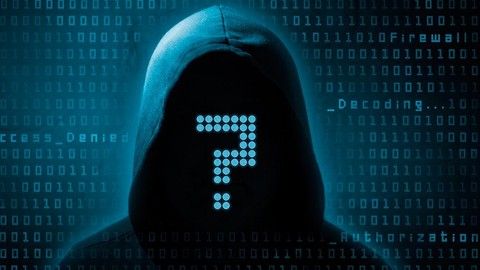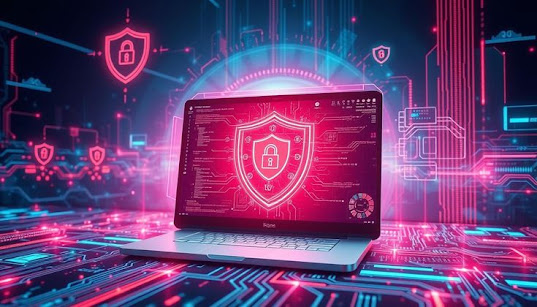How to Secure Your iPhone Smartphone in 2025
How to Secure Your iPhone from Cyberattacks in 2025
Introduction
As technology continues to advance at a rapid pace, smartphones have become the center of our daily lives. The iPhone, in particular, is no longer just a device for communication—it's used for everything from banking and shopping to storing personal photos and private information. As such, it’s crucial to ensure your iPhone is secure from cyberattacks. In 2025, the sophistication of these cyber threats has evolved, and it's more important than ever to take steps to protect your device from hackers, malware, and data breaches. This guide outlines practical strategies to safeguard your iPhone in the digital age.
1. Keep Your iPhone Software Up-to-Date
The first and most important step in securing your iPhone is to keep its software up to date. Apple frequently releases iOS updates that not only introduce new features but also address security vulnerabilities. Cyber attackers often target unpatched flaws in the operating system to gain unauthorized access to devices.
iOS updates also include patches for bugs and vulnerabilities that could be exploited by cybercriminals. To ensure you're always running the latest version, enable automatic updates in your settings. Simply go to Settings > General > Software Update and turn on Automatic Updates.
By keeping your iPhone updated, you significantly reduce the risk of cyberattacks exploiting known vulnerabilities.
2. Enable Two-Factor Authentication (2FA)
Two-factor authentication (2FA) is one of the most effective ways to enhance your iPhone's security. 2FA adds an extra layer of protection by requiring a second form of verification in addition to your password. Even if a hacker manages to steal your password, they won't be able to access your account without the second factor.
In 2025, most major online services support 2FA, including Apple’s own iCloud and Apple ID accounts. To enable 2FA, go to Settings > Apple ID > Password & Security and turn on Two-Factor Authentication. You'll be prompted to verify your identity by receiving a verification code on your trusted device or phone number.
Enabling 2FA is an easy yet powerful way to secure your Apple ID and other critical accounts associated with your iPhone.
3. Use Strong and Unique Passwords
Passwords are the first line of defense against unauthorized access to your iPhone. In 2025, many of us use the same passwords across multiple platforms, but this can be a significant security risk. If one account is compromised, attackers may gain access to others.
To ensure maximum protection, use strong, unique passwords for each account. A strong password should be a combination of uppercase and lowercase letters, numbers, and special characters. Avoid easily guessable passwords like “123456” or “password.” Instead, use a password manager to generate and store complex passwords securely.
If you prefer, you can also use Apple’s built-in password management system, which integrates with Safari and can generate strong passwords automatically. To access this feature, go to Settings > Passwords and choose a password from your saved credentials.
4. Be Cautious with App Permissions
iPhone apps often request permissions to access your personal data, camera, microphone, and location. While many permissions are necessary for the app to function, others may be excessive or unnecessary. For example, a flashlight app doesn’t need access to your contacts or camera.
In 2025, it's more important than ever to monitor and manage app permissions. To review permissions, go to Settings > Privacy, where you can see which apps have access to your location, photos, microphone, and more. Disable any permissions that are not essential for the app’s functionality.
By limiting app permissions, you reduce the chances of malicious apps exploiting your data or tracking your movements without your knowledge.
5. Install Security Apps and Anti-Virus Software
While iPhones are generally more secure than Android devices due to Apple’s closed ecosystem, they are still vulnerable to cyber threats like malware, spyware, and phishing attacks. Installing a reputable security app or anti-virus software can help safeguard your device against these risks.
Many security apps offer features like malware detection, real-time threat protection, and secure browsing. Popular security apps like Norton, McAfee, and Avast have dedicated iOS versions that can provide extra protection against harmful content. You can download them from the App Store, but always ensure you are getting the legitimate version from trusted developers.
Although Apple’s App Store is relatively safe, a security app can serve as an additional layer of defense in an increasingly connected world.
6. Avoid Public Wi-Fi for Sensitive Transactions
Public Wi-Fi networks, such as those found in cafes, airports, and hotels, are often unencrypted and can be a hacker's playground. Cybercriminals can intercept unprotected Wi-Fi signals, making it easier for them to steal personal information such as passwords, credit card details, and emails.
When using public Wi-Fi, avoid accessing sensitive information like online banking or shopping accounts. If you absolutely need to perform a sensitive transaction, use a Virtual Private Network (VPN) to encrypt your internet connection. A VPN creates a secure tunnel for your internet traffic, preventing third parties from monitoring your activity.
There are several trusted VPN services available for iPhone, such as NordVPN, ExpressVPN, and CyberGhost. Install one of these to add an extra layer of security when browsing the web on public Wi-Fi.
7. Enable Find My iPhone
In case your iPhone is lost or stolen, enabling the Find My iPhone feature can help you locate and secure your device. Not only can you track the location of your iPhone, but you can also remotely lock it, display a message on the screen, or erase your personal data to prevent unauthorized access.
To enable Find My iPhone, go to Settings > Your Name > iCloud > Find My iPhone, and toggle the setting on. Make sure that both Find My iPhone and Send Last Location are enabled for maximum protection.
Find My iPhone is especially important in the event of theft or loss, as it allows you to protect your sensitive information and even recover your device if it's still nearby.
8. Be Wary of Phishing Attacks
Phishing remains one of the most common and successful forms of cyberattack in 2025. Phishing attacks typically involve fraudulent emails, texts, or websites that appear to come from legitimate organizations, such as banks, social media platforms, or online retailers.
Phishing attempts often try to trick you into providing sensitive information like usernames, passwords, and credit card numbers. To avoid falling victim to phishing, always double-check the sender’s email address or phone number, and never click on suspicious links or attachments.
If you receive an unsolicited email or text asking you to provide sensitive information, always go directly to the organization’s website (instead of clicking links in the message) and log in to your account from there. Look for signs of fraudulent communication, such as spelling errors, suspicious URLs, or generic greetings like “Dear Customer.”
9. Use Encrypted Messaging Apps
While iMessage provides end-to-end encryption for iPhone users, not all messaging apps offer this level of security. If you are concerned about privacy and want to ensure that your messages are fully protected, consider using third-party messaging apps that offer end-to-end encryption by default.
Some of the most popular encrypted messaging apps include Signal, WhatsApp, and Telegram. These apps encrypt your messages in a way that only the sender and recipient can read them, ensuring that your conversations are secure even if intercepted by hackers.
Switching to an encrypted messaging app can be particularly useful if you need to send sensitive information or if you're communicating with individuals who are concerned about privacy.
10. Regularly Backup Your iPhone
Backing up your iPhone ensures that your data is safe in case your device is lost, stolen, or compromised. With iCloud and iTunes, it’s easy to create secure backups of your photos, contacts, apps, and settings.
To back up your iPhone using iCloud, go to Settings > Your Name > iCloud > iCloud Backup and turn on iCloud Backup. Alternatively, you can use iTunes (or Finder on macOS Catalina and later) to back up your device to your computer.
In the event of a cyberattack or data loss, having a recent backup ensures that you can recover your important data without much hassle.
Conclusion
In 2025, protecting your iPhone from cyberattacks is more important than ever. By following the steps outlined in this guide—keeping your software up to date, enabling two-factor authentication, using strong passwords, being cautious with app permissions, and taking advantage of advanced security features like VPNs and encrypted messaging—you can significantly reduce the risk of falling victim to cyber threats.
In today’s digital age, where cyber threats are constantly evolving, it’s crucial to stay vigilant and proactive. By securing your iPhone, you can continue to enjoy the convenience and power of your device without compromising your personal security.



Comments
Post a Comment